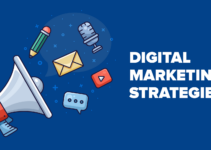Clients have more alternatives when picking a bank in today’s society. Thanks to the development of Internet banking and smartphone applications, customers can now create accounts and perform transactions with just a few clicks. In this competitive environment, banks should do all they can to improve the client experience. Customer Relationship Management (CRM) is an excellent tool for doing this.
CRM is a method that enables businesses to manage their connections with present and prospective consumers. It entails employing technology to coordinate, automate, and organize technical support, customer care, marketing, and sales operations. CRM for banks may assist banks in increasing income, enhancing client retention, and delivering better customer service. But if you wonder how CRM solutions improve the customer’s banking experience, dig deeper in this post!
What Is CRM Software?
Customer relationship management (CRM) is a system that allows you to manage all of your company’s interactions and connections with current and prospective clients. The purpose is straightforward: to enhance commercial relationships. A CRM system assists businesses in increasing profitability, streamlining procedures, and staying connected to customers. CRM is often called a CRM platform or system, a tool that aids in productivity, sales management, contact management, and other areas.
CRM software allows you to concentrate on your company’s relationships with individual people, such as suppliers, colleagues, service users, or customers, during the life of the relationship, which includes offering additional service and support, winning their business, and seeking new customers. A CRM system allows your marketing and sales team to monitor and adhere to a customer’s contact path with your company. Improving every customer touchpoint may improve the customer’s experience and journey.
The Role of CRM in Banking Solutions
CRM in banking refers to a technology-driven solution that helps financial organizations manage and improve client relationships. It is beneficial to banks in:
- Making better judgments as it offers a complete perspective of every client’s connection with the bank.
- Optimize the bank’s interactions with consumers and the banking staff.
- Customer data is consolidated on a platform.
CRM in banking not only provides a competitive advantage but also other advantages. For example, it enables banks to tailor services, increase client retention, simplify procedures, obtain helpful information for marketing and sales initiatives, boost staff efficiency, and ultimately develop more lucrative customer relationships.
How Can CRM Enhance the Customer Experience in the Banking Industry?

Source: linkedin.com
CRM improves the customer experience in the banking business by:
Individualized Service
CRM enables financial institutions to gather and analyze client data such as behavior, preferences, and transaction history. With this information, banks may personalize their services to meet the individual demands of every consumer. A bank, for instance, may give a client incentives or special rates on foreign transfers when they do so regularly.
Increased Communication
CRM enables banks to connect with their consumers more efficiently. Banks may use automated messaging to deliver customized messages to consumers through their chosen communication channels, such as social media, text messages, or email. This may assist banks in keeping clients aware of goods and services that may interest them.
Improved Customer Service
CRM may also help the banking sector enhance customer service. By recording client complaints and interactions, banks may discover frequent problems and rapidly fix them. For instance, when several clients have difficulty entering their online accounts, a bank may swiftly examine and rectify the problem for all impacted consumers.
Cross-Selling Opportunities
CRM allows banks to identify cross-selling opportunities based on customer behavior and preferences. For example, if customers frequently use their debit card for purchases, a bank can offer them a credit card with rewards points. This not only benefits the customer but also increases revenue for the bank.
24/7 Accessibility
With CRM, banks can provide customers with 24/7 access to their accounts and services. Customers can conduct transactions and access their accounts anytime, anywhere. This not only enhances the customer experience but also increases customer satisfaction.
Increased Customer Loyalty
Fostering customer loyalty is crucial for the success of businesses. For example, unlocking the potential of increased lead conversion is a compelling reason to implement a banking CRM system. Imagine reaching out to a prospect to present them with a new service, only to discover that another department has already met their needs within your bank. This missed opportunity can be resolved by leveraging the power of a CRM.
Streamline Process Flow
Implementing a banking CRM enables faster procedures across several touchpoints. Any bank employee may quickly access a customer’s profile using a unified, single system, allowing a smooth transfer across departments.
What Should You Expect From CRM?

Source: e-spincorp.com
The banking business is continuously changing, and technology has undoubtedly played a big part in influencing it. The introduction of Customer Relationship Management (CRM) technology has been among the most important recent advances.
CRM software has transformed how banks connect with their clients, delivering critical information about their actions and preferences. Like any other technology, CRM is changing, and new trends always emerge.
Here are several prospective CRM for banking trends to keep an eye on:
Personalization
Customers nowadays demand a high level of customization whenever working with their banks. CRM technology may assist banks in meeting this need by offering complete customer profiles that include behavior patterns, preferences, and transaction history. Banks may use this information to provide individualized service to every client, increasing consumer loyalty and happiness.
Connection to Other Systems
Banks use a variety of systems to conduct their business. Banks may provide a unified experience for staff and consumers by utilizing CRM technology in conjunction with other technologies. Connecting CRM with contact center software may enable customer care professionals to give better customer support.
AI and Automation
Artificial intelligence (AI) and automation are revolutionizing the banking business, and CRM is no exception. Banks increasingly interact with consumers using AI-powered chatbots, giving rapid and accurate solutions to their inquiries. This not only saves money and time for banks, but it also improves the whole consumer experience.
Optimization for Mobile Devices
Customers are increasingly using mobile devices to access banking services. As a result, banks’ CRM systems must be optimized for mobile devices. This involves ensuring the user experience is simple to utilize on smaller displays.

Source: salesforce.com
Key Takeaway
Customer Relationship Management (CRM) technology is an effective tool for assisting banks in providing excellent customer service. CRM software helps banks tailor their services, offer an effortless experience throughout numerous channels and systems, and simplify their operations by delivering essential insights into client preferences and behavior.
As we have seen, various developing trends in CRM for banks are worth keeping an eye on. Banks that accept these trends, from linking CRM with other systems to adopting AI and automation, will be better positioned to fulfill their clients’ changing demands and expectations.



